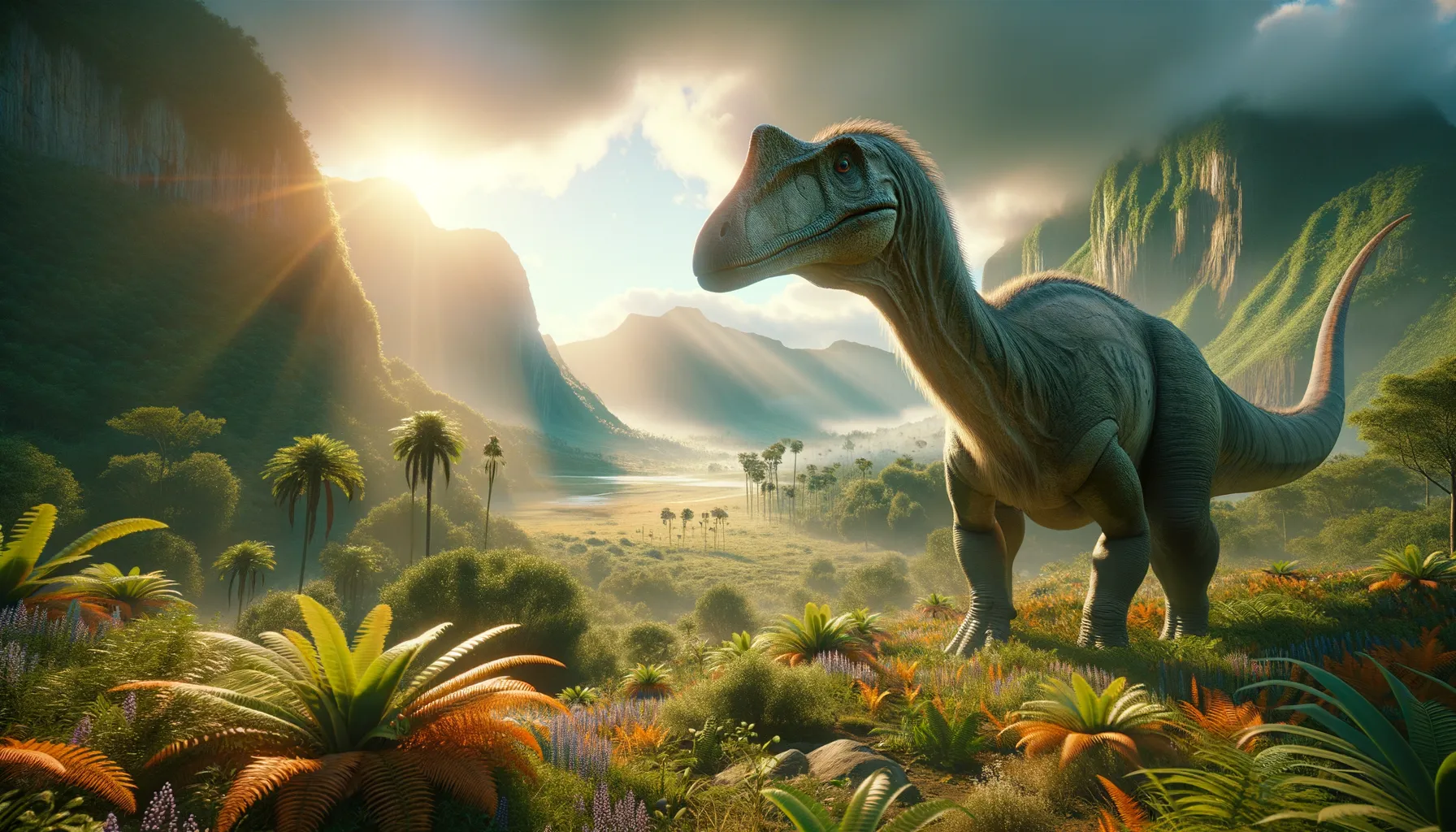
Canardia
Discover the duck-billed giant!
Period
Cretaceous
Length
About 8 meters long.
Height
Approximately 3 meters tall.
Weight
Around 2,000 kilograms.
Canardia was a herbivorous dinosaur that roamed parts of what is now Europe during the Late Cretaceous period. Known for its distinctive duck-billed snout, it was a member of the hadrosaur family. These dinosaurs were primarily browsers, using their beaks to forage for vegetation. Canardia fossils, first found in France, provide valuable insights into the diverse dinosaur ecosystems of the Cretaceous period.
Diet
Canardia primarily fed on vegetation, utilizing its beak to clip leaves, branches, and soft plants. Due to its large size, it likely required a substantial daily intake of plant matter.
Hunting
As an herbivore, Canardia did not hunt for food. Instead, it spent significant time foraging for edible plants in its environment.
Environmental challenges
Canardia faced challenges such as finding enough food to sustain its large size and avoiding predators. Seasonal changes could impact the availability of vegetation. It also had to navigate through varied terrains, affecting its ability to efficiently locate food.
Speed
Slow, as it was a bulky herbivore.
Lifespan
Possibly 20 to 30 years, typical of large herbivores.
First discovery
First discovered in France in 2005.
Fun Facts
- Canardia was a type of dinosaur known as a hadrosaur, often referred to as 'duck-billed dinosaurs' because of the shape of their snouts.
- This dinosaur lived during the Late Cretaceous period, around 66 million years ago, just before the mass extinction event that wiped out many dinosaurs.
- Fossils of Canardia have been found in Europe, specifically in France, providing insights into the types of dinosaurs that lived on the continent back then.
- Canardia was a herbivore, which means it primarily fed on plants, likely by grazing on low-growing vegetation.
- The name 'Canardia' is derived from the Latin word for 'duck,' highlighting its duck-billed appearance.
- Like other hadrosaurs, Canardia may have lived in herds, offering them better protection against predators.
- The study of Canardia helps paleontologists understand more about the diversity and evolution of plant-eating dinosaurs before their extinction.
Growth and Development
Canardia likely hatched from eggs and grew rapidly during its early years. Juveniles would need to quickly reach sizes that afforded them some protection from predators. Growth rates would slow as they reached adulthood, eventually developing the full size of a mature hadrosaur.
Habitat
Canardia inhabited lush, forested areas with plenty of plant matter to sustain its diet. These environments were often near water sources like rivers or lakes. Its ecological niche played a crucial role in the ecosystem by maintaining plant populations.
Interaction with other species
Canardia likely traveled in groups for protection from predators. Its presence would have impacted the plant life and contributed to the ecological balance. It might have coexisted with other herbivorous species, potentially competing for resources.
Natural lifespan
Canardia's natural lifespan might have been around 20 to 30 years.
Reproduction
Reproduction involved laying clutches of eggs, possibly in nests made of vegetation. Parental care might have included guarding eggs and hatchlings from predators. The young would have matured over several years to reach full adulthood.
Social behaviour
Canardia likely exhibited social behavior, forming herds for protection and social interaction. This herding behavior helped reduce the risk of predation. Social structure within the group may have included communication through vocalizations.
Fossil locations
Fossils of Canardia have primarily been found in France. These findings have helped reconstruct its habitat and behavior. The discovery adds to the understanding of hadrosaur diversity during the Cretaceous period.
